Motorcycle Investor mag
Subscribe to our free email news

Our bikes – 1994 Triumph Daytona Super III
by Guy ‘Guido’ Allen, pics by Ben Galli Photography
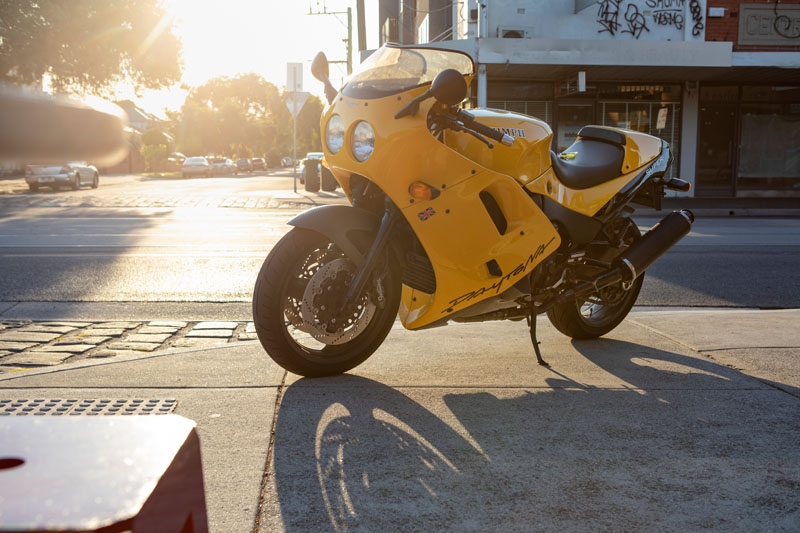
Triumphs & Tribulations
Spending far too long sitting in the shed ended up hurting our Triumph Super III
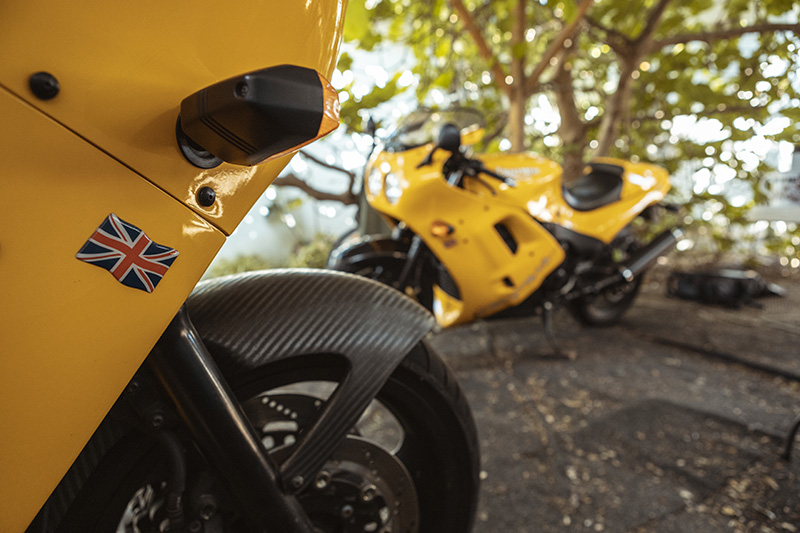
The Triumph Super III and I haven’t been getting on lately. It’s one of two early Hinckley Daytonas in the shed – the other is a 1200. Though only a 900, the Super III was more expensive back in the mid-nineties, thanks in part to lots of carbon fibre bodywork and exotic Alcon six-piston front stoppers.
Triumph also made a fuss about the Super III running tuning done in consultation with Cosworth, which meant different igniter, cam profiles and higher compression (12:1) than a stock 900, with a power claim of 86kW compared to 73 for a stocker. That said, the 110kW Daytona 1200 was in a similar high state of tune.
When it came to pricing, the Super III was a lofty $21,000 and the 1200 pegged at $18,000, at a time when a Honda Fireblade was $16,000.
The build numbers for the Super III were tiny – 805 – which of course adds to their appeal for fans of Hinckley models.
Appeal or otherwise, I seem to have spent twice the amount of time on this bike getting it sorted over the years that has been invested into the 1200. First it was getting the carburetion right. Admittedly the 1200 had similar work done years before when it was a Triumph Australia demo.
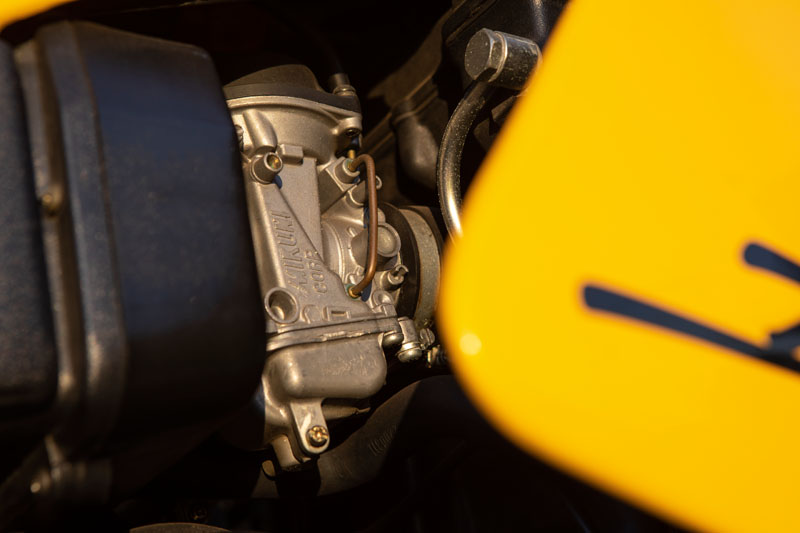
The stock carburetion on these things is okay, but was hobbled a little to get them past then relatively new and restrictive noise laws. A good tuner – Charlie at Turn One Motorcycles in Melb, to name one – can get more out of them.
Lately it’s been suffering two issues. The fuel tap has been acting weird and getting an intermittent leak, while starting and low-speed running have become an issue. Often, I’m only getting two cylinders out of three until it warms up. Both problems were getting progressively worse.
This was a bike that was ridden once every couple of months, if it’s lucky, and its relatively minor troubles got pushed to the backburner while I dealt with more pressing problems with other toys.

Finally, I put aside a morning and investigated. These things run some interesting architecture. For example the sidecovers and tail can be taken off as a single giant piece. Once you remove the very substantial fuel tank (25 litres), you’re confronted by a massive Fritz Egli-style main frame spine.
As with a lot of machines from the period, when you get this far you might as well reef out the spark plugs for a quick clean. They can’t be accessed with the bodywork in place, so why not make the most of the opportunity? It’s also a good time to double check the ignition wiring is all hooked up and sitting where it should – so far so good.
It didn’t take long to discover the culprit for the poor running. A couple of a dollars-worth of vacuum line from the spigot on an intake manifold to the fuel tap was perishing at one end. It’s one of those normally invisible issues that quietly causes chaos. I really should have twigged to it earlier, having recently suffered similar problems on the old Blackbird. So that was one hassle that was easily fixed.
If there’s a moral to that story, treat with suspicion any vacuum lines that are over 20 years old.
Next, the leaky fuel tap. Like a lot of its contemporaries, this is a surprisingly complex bit of kit. It’s vacuum operated – so there’s a spring-loaded diaphragm set at the back, plus a three-way tap up front. Closer inspection revealed both were leaking, and I already knew that the three settings (on, reserve and prime) weren’t working as they should.
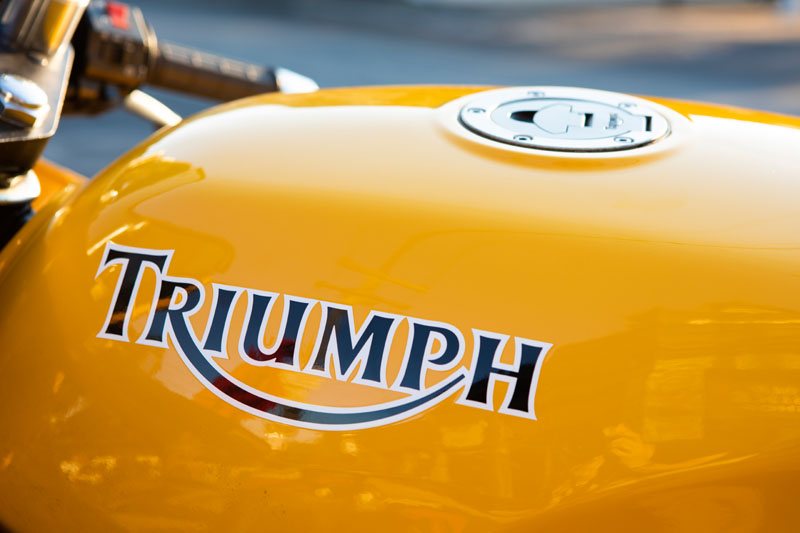
With the fuel siphoned out, we got to work removing the thing for a closer look. Suspect number one for the tap was a washer that incorporated an O-ring. It defied any attempts at removal, as it was a neat press-fit behind a ridge in the casting. One option was to fit a fresh O-ring over the old one, but that experiment failed.
Issue two was the diaphragm fuel switch. It seemed as clean as the proverbial whistle when disassembled, with no obvious breaks in the diaphragms, or damage to the spring. Reassemble and of course it still leaks.
Right. Now a more determined and skilled individual could probably spend a day or more on it and eventually, maybe, sort out the problems. That’s when I reached for the iPad and went hunting for prices on new units.
Parts availability for these nineties Hinckley machines is still pretty good, with a few retailers offering searchable online catalogues. It turned out that a complete assembly, including some sealing washers and fresh knobs were going to set me back $130 each. That sounded fine to me, if it meant not burning a heap of time on something that might not work. I ordered two, one as a spare for the 1200.
A tip here: I ended up using Fowlers in the UK. One mob I dealt with quoted a flat $125 for delivery (UK to Australia) without bothering to check the size of the shipment, while Fowlers actually checked overnight and came back by email with a delivery cost of $30.
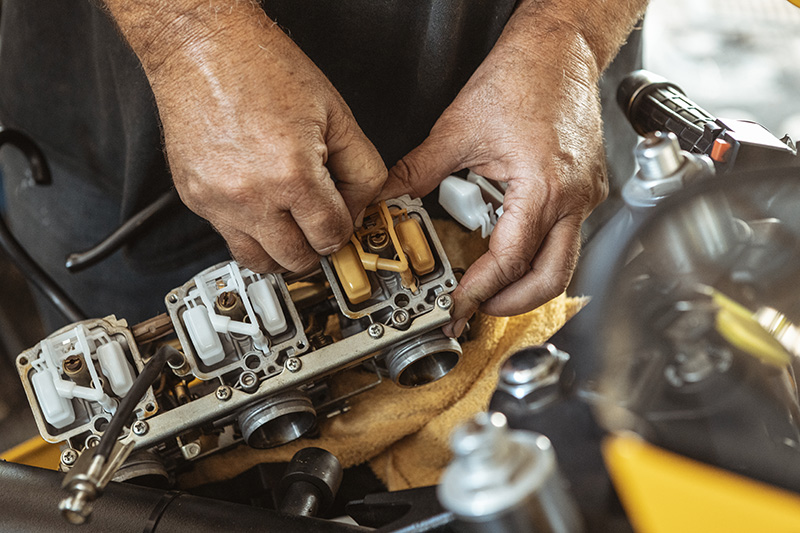
That kinda fixed some of the problems, but further investigation revealed the carburettor floats and needle set were suspect. Another order online and they arrived pretty quickly. (Remember this was before Covid hit!)
All good? Well, yes and no.The leaks were gone, and the bike was running okay, but then we started to get some kick-back when hitting the starter. This is onimous, as it's the first sign the sprag or starter clutch is on the way out, and that's a big job.
Some people tackle this one themselves – not me. To do it properly, it involves splitting the crankcases. I have seen work-arounds for this on the web, but frankly would be happier to give the whole job to a professional.
These sprag clutches have history in Triumph T300 series. Some will never fail. However there was a situation in the mid to late 1990s where there was a run of failures. The finger was initially pointed at a Sagem ignitor that tried to fire the engine too early and they were replaced as a recall. Lots of sprags were done under warranty as well, while the parts themselves have been modified over the years for more reliability.
My bike is a low-miler – under 9000km – while the Daytona 1200 with lots more miles has never had an issue. And there are people out there who clocked up hundreds of thousands on the T300 series with no problem. Go figure.
Sadly, my diagnosis was correct and we bit the bullet on the sprag replacement – another job for Charlie. Cost? A little over $2k. Sure that's a substantial amount of money, but I bought this thing from a mate at the right price many years ago and it's worth keeping.

So, is that it for problems? Let's hope so – I'm pretty confident it is. As a precaution I've fitted a lithium battery, as good charge is critical on these things. And I've shuffled it forward in the shed so it gets ridden more frequently. I reckon the all-too-rare use was a big factor in the dramas. Some bikes tolerate it better than others, but in the end they all suffer badly if left to literally rot too often and for too long.
Back in the saddle, the Super III is a big friendly toy – kind of a latter day T160 on steroids. The triple-cylinder growl is wonderful, the six-spotter Alcon front brakes are still sharp, and there's a lot of fun to be had if you take it for a swing through the curves. Plus, it's something a little unusual to have in the shed.

1994 T300 Triumph Daytona Super III
ENGINE
Type: Liquid-cooled in-line DOHC triple with four valves per cylinder
Bore and Stroke: 76 x 66
Displacement: 885cc
Compression ratio: 12:1
Fuel system: 3 x 36mm Mikuni CV
TRANSMISSION
Type: 6-speed constant mesh
Final drive: chain
CHASSIS & RUNNING GEAR
Frame type: Egli-style single spine steel
Front suspension: Conventional 43mm fork, full adjustment
Rear suspension: Monoshock, full adjustment
Front brakes: 6-piston 310mm twin discs
Rear brake: 2-piston, 255mm disc
Front tyre: 120/70-17
Rear tyre: 180/55-17
DIMENSIONS & CAPACITIES
Dry weight: 211kg
Seat height: 790
Fuel capacity: 25lt
PERFORMANCE
Max power: 115hp @9500rpm
Max torque: 8.3kg-m @6500rpm



-------------------------------------------------
Produced by AllMoto abn 61 400 694 722
Privacy: we do not collect cookies or any other data.

Archives
Contact




